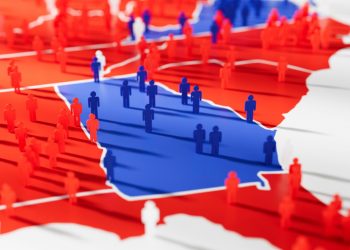RISMEDIA, May 23, 2008-When shopping on a website, some customers appreciate a virtual advisor to help them make product choices. However, more sophisticated customers might find such advisors annoying. To solve this dilemma, MIT Sloan School of Management professors propose “morphing” a website to change the look and feel of it – not just the content – to instantly adapt to customers’ different information needs.
“Website design has become a major driver of profit. Websites that match the preferences and information needs of visitors are efficient; those that do not will forego potential profit and might be driven from the market,” write the professors in their paper titled, “Website Morphing.” The coauthors, MIT Sloan Marketing Professors John R. Hauser, Glen L. Urban and Michael Braun, and Guilherme (Gui) Liberali of Universidade do Vale do Rio dos Sinos, found that banks, cell phone providers, broadband providers, content providers, and many retailers could increase sales and services by almost 20 percent if companies’ websites matched the information needs or cognitive styles of their visitors.
“Some people want someone else to help them through the technical details to get recommendations on a website, but others are more analytic and want the process to allow them to compare features and alternatives,” explained Hauser. “By morphing, you figure out who wants a simple website that gives advice and smaller amounts of information and who wants a more detailed, complicated site that allows visitors to delve deeper into the product.”
Morphing works in two ways. First, every click a customer makes on a website reveals something about his or her cognitive style. Examples of such styles are impulsive vs. deliberative, visual vs. verbal, or analytic vs. holistic.
The second step is to determine what type of morph will serve each style, which is determined by “machine learning,” said Hauser. A website might morph by changing graphs and pictures to text, reducing a display to fewer options, or by optimizing the amount of information presented about each product choice. A morphed website also might add or delete things like column headings, links, tools, virtual personas and dialogue boxes.
The professors found that by using morphing to match website characteristics to customers’ cognitive styles, companies could improve sales by 20 percent, which in the case of the experimental BT Group website (formerly British Telecom) studied in their paper represented approximately $80 million in additional revenue.
“Companies want to customize and target websites to customers, but the current solution is a cluttered site with a lot of options for personalizing the site. However, people don’t want to take the time to personalize it themselves,” said Urban. “We want to make the shopping experience match customers’ styles as revealed through their clicks and there is quite a bit of potential to improve sales and profits to by better matching how people process information.”
Hauser and Urban added that while this technology is not the type of thing an average website designer could implement, it is transferable to other companies. “A few cutting-edge companies are working toward this, but most companies don’t even know this is possible. If this catches on, it could be the wave of the future,” said Hauser.
To read the full paper, see:
http://web.mit.edu/hauser/www/Papers/Hauser_Urban_Liberali_Braun_Website_Morphing_May_2008.pdf










